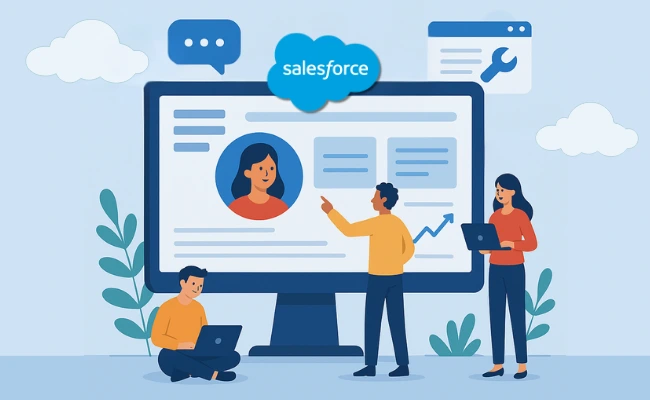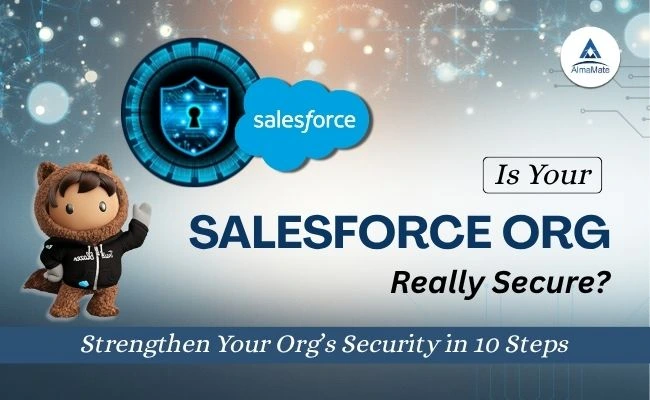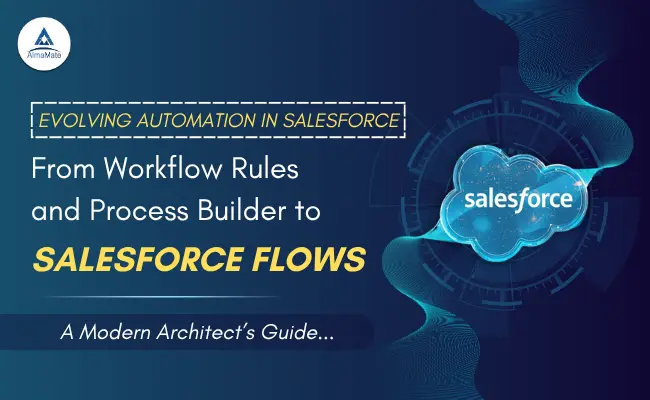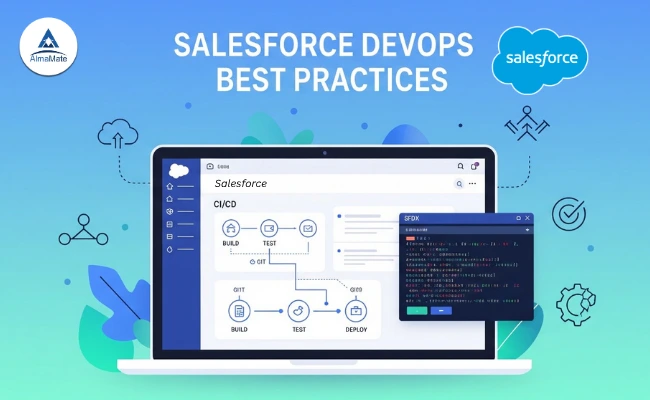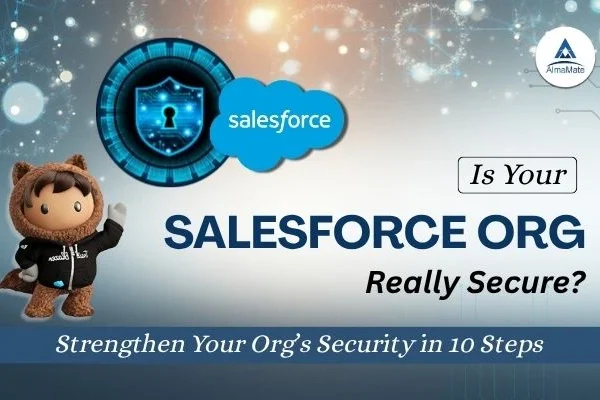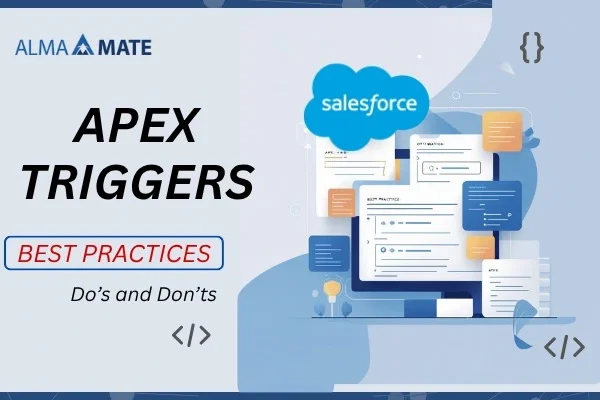
Table of Contents
Introduction
Businesses are always looking for new ways to connect with customers, partners, and employees in a world where digitization is everything. In a world that is increasingly interconnected and constantly changing to match customers’ preferences, businesses want to be able to deliver personalized and scalable experiences. Salesforce Experience Cloud, previously branded as Community Cloud, fulfills this requirement by providing a powerful digital experience platform on which organizations can create branded portals, service experience hubs, partner interfaces, and employee intranet experiences.
Experience Cloud is more than just a community builder; it is a holistic solution that works effortlessly with Salesforce CRM and utilizes the power of the entire Salesforce ecosystem. In other words, businesses can deliver data-rich, highly tailored experiences to various types of users securely, at scale, and with real-time access to data. Whether it is providing self-service functionality to customers, driving collaboration with partners, or supporting our own internal Teams, Experience Cloud has it all.
This blog will cover all features of Salesforce Experience Cloud, covering the basic cloud features, multiple types of usage & use cases in real time. At the end of this guide, you’ll have a nuanced understanding of what Experience Cloud can do for your digital engagement strategy and your business.
What is Salesforce Experience Cloud?
Transition from Community Cloud
Experience Cloud was previously known as Salesforce Community Cloud, which was created for building branded online communities. But as digital requirements changed, the platform evolved. In 2020, the new product, rebranded under the name Experience Cloud, provides coders and creators with a complete toolkit to build fully customized digital experiences for their audiences.
Core Purpose
Using Experience Cloud, organizations can create and publish custom portals, websites, mobile apps, and help centers that interact directly with Salesforce data. These experiences benefit customers, partners, employees, and even the public. The outcome is increased emotional connection, enhanced service, and improved business impact.
Key Terminology
- Digital Experiences: Interactive, informative user interfaces that deliver content and enhanced functionality to users.
- Experience Builder: A drag-and-drop, no-code tool for designing and configuring digital experiences.
- Templates and Themes: Ready-made frameworks and designs that accelerate development and maintain a cohesive brand appearance.
- Salesforce CMS: a content management system to work with Experience Cloud for content management and release.
Supported Experience Types:
- Customer Communities – Self-service sites featuring case management and support team interaction.
- Partner Portals: Providing secure systems for managing partner relationships, sharing leads, training, and co-selling.
- Employee Spaces: Intranets and employee hubs for finding resources, knowledge bases, and HR services.
- Industry Experience: Customized solutions for healthcare (patient portals), education (student platforms), government (citizen service portals), and more.
Highlights of Salesforce Experience Cloud
Experience Builder
The design tool in Experience Cloud is Experience Builder. It enables users(with no prior experience in programming) to construct powerful, graphically enhanced websites and portals. Key capabilities include:
- Drag and drop components: These include the ones that are prebuilt or custom-made made such as graphs, feeds, forms, and dashboards.
- Customizable theme: Choose color schemes, fonts, logos, and navigation styles suited to your brand.
- Page variations: You can display different content or layouts for different user groups.
- Mobile support: Responsive layout, designed for relatively smaller screens of mobile devices.
Targeting the User Audience
That’s one of the big promises made to live up to for the Experience Cloud – the idea that it can serve up individualized experiences to different groups of users. Features include:
- Audience definition: Segment the user base according to roles, locations, profiles, or CRM properties.
- Dynamic content: Show custom banners, alerts, and page layouts designed for various audiences.
- Conditional display: Displays or hides components according to user permissions or interaction behavior.
Salesforce CRM Integration
Because Experience Cloud is built on the Salesforce Platform, it natively integrates with the following:
- Sales Cloud: sharing of opportunities, leads, and contact information with partners.
- Service Cloud: Make knowledge articles, chatbots, and case management available to customers.
- Marketing Cloud: Personalize emails and receive engagement insights.
- Custom objects and Flows: Access custom data or business processes in your portal.
KB and Case Management
The features described above can be utilized in support-led experiences:
- Knowledge articles: Convert help content into searchable articles.
- Case Deflection: Minimize support case volume by directing users to existing solutions.
- Case management: Enable users to create, view and update support cases.
- Automation: Escalate high-priority cases, or assign agents on the fly, with Flows.
State Of the Art Security and Key Card Access
Safety is just as important for digital experiences outside and inside the enterprise. Salesforce provides:
- Role-permission access: You decide what the user can view and interact with.
- Login methods: username/password, SSO, SAML and the social login option.
- Two-factor authentication (2FA): Boost protection for sensitive actions.
- Guest browsing: Allow unauthenticated users to access specific content or services.
Gamification and Engagement
Experience Cloud includes features to ramp up user engagement and retention:
- Reputation points: Encourage users to provide valuable content or answer questions.
- Badges: Create milestones, for increased expertise and participation.
- Leaderboards: Show off your best contributors and encourage people to compete with one another.
CMS and Content Management for Salesforce
The Salesforce CMS lets authors create and publish rich media content:
- Full I18n support: Write articles and pages in different languages.
- Reusable Content: Share CMS Content Blocks between pages.
- Approval workflows: Make sure content aligns with compliance or brand standards.
Analytics and Reporting
Key metrics for monitoring user experience :
- Out-of-the-box dashboards: Track user activity, content views, and engagement.
- Google Analytics integrated: Keep track of your traffic, session duration and click-throughs.
- Tableau CRM and CRM Analytics: Deliver advanced visualizations and AI-driven insights.
Salesforce Experience Cloud in Action
Customer Self-Service Portal
Businesses can enhance customer satisfaction by providing:
- FAQs and knowledge articles
- Chatbots and virtual agents
- Community forums for peer support
- Service case tracking
- Tailored product suggestions
PRM (Partner Relationship Management)
Experience Cloud delivers strong PRM capabilities for scaling channel sales:
- Lead assignments and Deal registration.
- Sales education and certification
- Marketing asset sharing
- Teaming up with partners on sales forecasts
- Performance dashboards
Employee Communities
Communities reduce internal noise and enhance communication and collaboration:
- Company news and announcements
- Employee recognition boards
- HR helpdesk and policy library
- Integrations with learning management systems (LMS)
Field Service Portals
Assist off-site field agents or contractors with:
- Work orders and job schedules are visible to itinerant workers
- Troubleshooting information in the knowledge base
- Responsive, mobile-first design
- Readily Available inventory
Industry-Specific Solutions
- Education: Student portals for their grades, assignments, and collaboration
- Health care: Patient portals for scheduling, messaging, and accessing medical history
- Retail: Loyalty program portals, order tracking, and personalized offers
- Government: Public service portals for submission of documents, redressal of grievances & announcements
Real World Examples and Case Studies
Coca-Cola Enterprises
Coca-Cola leveraged Experience Cloud to create a partner community to provide distributors and retailers with real-time product information, training content, and sales resources. Key outcomes of this exercise were:
- 60% increase in partner engagement
- Time-to-market advantage for new product launches
- Integration with Sales Cloud to easily register deals
Unilever
Unilever used a customer self-service portal to increase consumer engagement:
- Service Cloud Integration for case tracking and logging
- Provided self-help materials, video guides, and product applications
- Realized 40% reduction in support calls
WorkXMate Technologies
WorkXMate developed a client collaboration portal with the help of Experience Cloud:
- Custom onboarding Flows for new customers
- Document sharing and project monitoring
- Out-of-the-box, embedded performance dashboards
- Connected Experience Cloud with custom Apex automation and logic
Telstra
Telecommunication giant Telstra developed a customer-facing portal with multi-language capabilities:
- Users could see usage, plan management & request support
- Plan and region-based Personalized homepage
- Decrease in customer churn/attrition by 25% as a result of highly improved engagement
AlmaMate Info Tech
AlmaMate Info Tech built a training and alumni portal with Experience Cloud. This helped with the following:
- Levelled up the certification process
- Role-based access to LMS content
- Events, Web conferences, and discussion forums
- Increased student retention and satisfaction
What are the Benefits of Salesforce Experience Cloud?
- 360° view: Single user profile and interactions across systems
- More engagement: Personalized, data-driven content and experiences
- Quicker deployment: Go live fast with templates and builders
- Scalability: Serve millions of users using enterprise-grade infrastructure
- Security: Strong user authentication and authorization controls
- Mobile-first: Responsive design for all device types out of the box.
- Affordable: Eliminates high-cost service exchanges and overhead
Practical Tips and Best Practices
Define the outcomes in business terms and understand the goals clearly: Begin with use-cases that are measurable in terms of business impact:
- User journey maps – identify what is needed (according to the user group)
- Fast deployment with templates: Get started immediately with robust standard layouts
- Pilot: Launch in stages to a limited group of users before widespread release
- Collect feedback: Use responses & data received from surveys and analytics
- User training: Is there onboarding documentation or guidance?
- Monitor work performance: Get better and evolve continuously with data insights
Conclusion
Salesforce Experience Cloud: For companies looking to create breakout digital experiences distributed across the business ecosystem, Salesforce Experience Cloud is a game-changer. By bringing together CRM data, delivering personal information at scale, and providing a development environment for highly tailored apps, it helps businesses serve customers better, empowers partners, and engages employees. Whether you are trying to get a simple self-service portal off the ground or an entire partner ecosystem, Experience Cloud offers the tools and infrastructure necessary for long-term success. Customers expect personalized, seamless & engaging experiences in this hyper-connectivity age. With Salesforce Experience Cloud, every modern enterprise is capable of delivering it.
Creating dynamic digital portals with Experience Cloud is more than just great design — it requires a deep understanding of technology, user experience, and business strategy. At AlmaMate Info Tech, we blend all three to deliver impactful solutions powered by Salesforce.
Whether you’re building from the ground up or enhancing an existing portal, our team of seasoned Salesforce developers and consultants works closely with you to unlock greater value from your Salesforce investment. We design and implement tailored solutions that align with your business goals, ensuring scalability, security, and a superior user experience.
As a trusted Salesforce Development Company, AlmaMate Info Tech is committed to helping you turn your portal vision into a high-impact digital reality.
Connect with us today and discover how we can elevate your customer, partner, or employee experience with Salesforce Experience Cloud.

